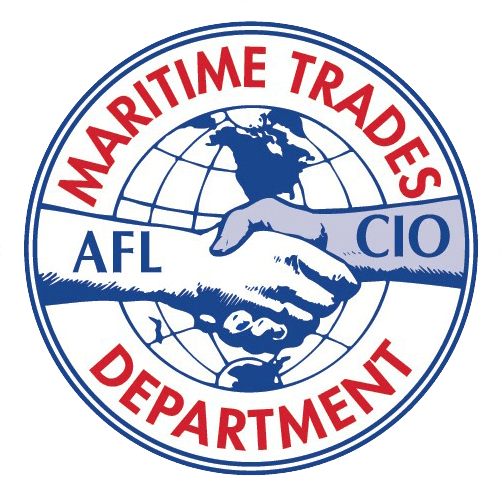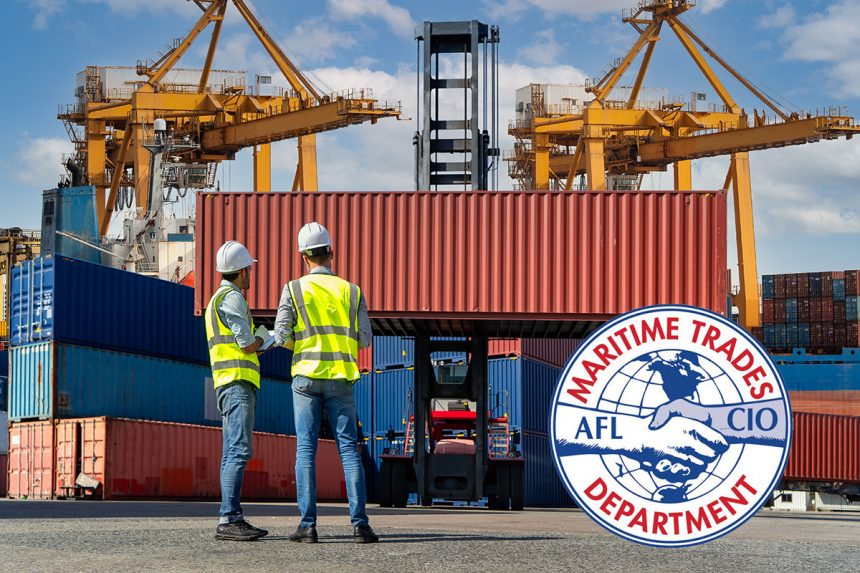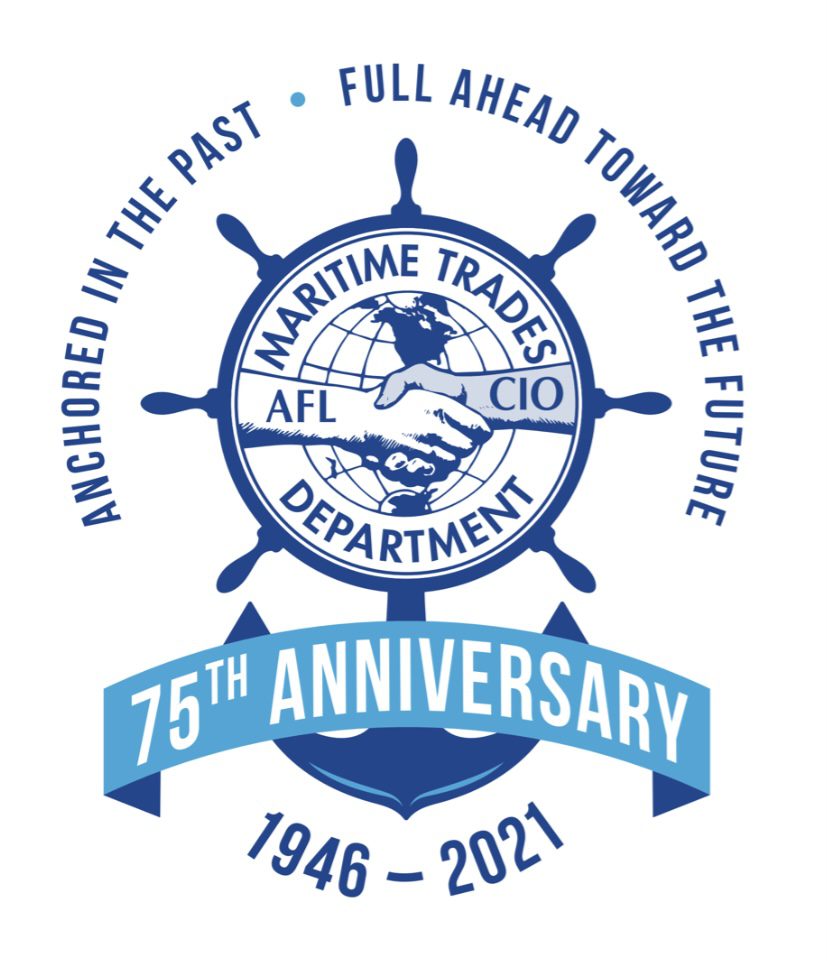 (This is the second of three installments)
(This is the second of three installments)
The Paul Hall era for the MTD ran from 1957 until 1980.
In truth, he was involved before he became the MTD president as he oversaw the New York Port Maritime Council (PMC). With sound trucks, coffee wagons and plenty of manpower, Hall made sure the PMC was a presence in the greater New York region – from waterfront beefs to the 1948 Wall Street strike by administrative workers. What he started in the Big Apple, he applied to the MTD across the country and in Canada.
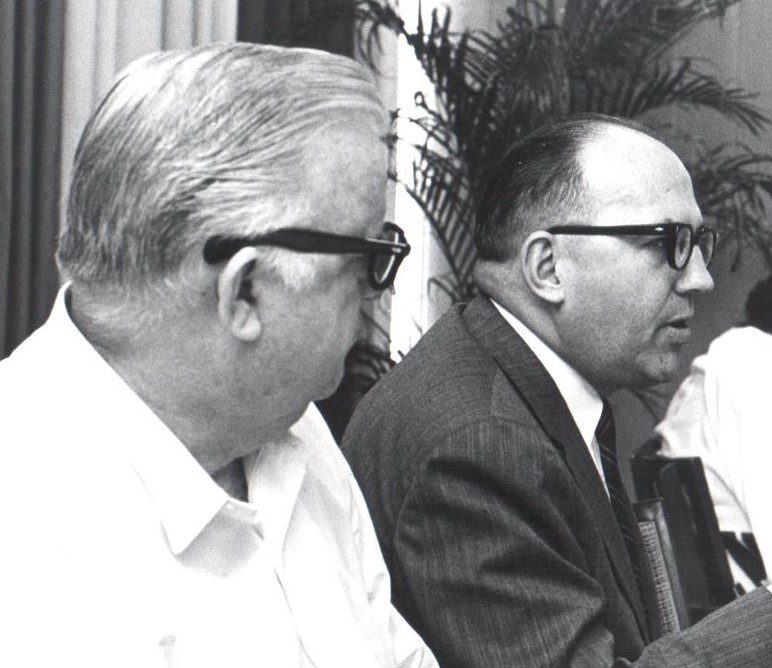
MTD President 1957-80
Peter McGavin
MTD Exec Sec-Treas 1960-75
During Hall’s 23 years guiding the department, the MTD increased its number of affiliates, swelled its series of Port Councils and expanded its influence.
Harry O’Reilly left the AFL staff in 1956 to become the MTD executive secretary-treasurer. Under Hall and O’Reilly, the department staff grew to tackle more of the challenges facing the maritime industry. Peter McGavin took over for O’Reilly in 1960 and was instrumental in the creation of legislative and research divisions within the department.
The department launched a monthly magazine that dealt with maritime and Labor issues. Topics included the Jones Act, cargo preference, domestic shipbuilding, fisheries, minimum wage, worker safety and much, much more.
The MTD initiated a series of maritime seminars and lectures in Washington, DC. Speakers included legislators, administration officials and shipping executives. The programs proved so informative that Port Councils hosted similar events around the country.
However, the primary concern for the MTD, its PMCs and its affiliates was calling attention to the plight of the U.S.-flag merchant fleet. Since World War II, despite verbal support from Presidents Eisenhower, Kennedy and Johnson, the U.S. commercial fleet was shrinking. When the Vietnam War broke out, World War II-vintage cargo ships and tankers made up a substantial part of the fleet.
Efforts began to pass federal legislation to assist maritime. The last major bill to sail through Congress was passed during the Franklin Roosevelt administration in 1936 as America prepared for the possibility of war in Europe and Asia.
Writing in the MTD’s official publication Maritime in November 1967, McGavin stated, “And in the same manner we seek to promote the union label and seek an improved minimum wage, we also seek a strong, modern merchant marine.”
America’s leaders were debating not just the need for refurbishing the commercial fleet, but also whether to have new builds constructed overseas rather than in domestic shipyards. The MTD and its affiliates fought to protect American workers and jobs.
Richard Nixon’s 1968 presidential campaign included a plank to revitalize the U.S.-flag fleet. In February 1969, MTD Administrator O. William Moody declared, “It will continue to be one of the prime goals of the Maritime Trades Department to bring to the attention of the public the facts about our merchant marine, so that the public can join its voice to ours.”
As debate began on Capitol Hill for maritime legislation, President Nixon told a Seattle audience in 1969, “The time has come for new departures, new solutions and new vitality for American ships and American crews on the high seas of the world.” In addition, the MTD, through its Port Councils, launched its “Ship American” campaign.
The House of Representatives passed the bill in early 1970, but the Senate continued to debate the measure. It called for the construction of 300 new vessels over a 10-year period, construction and operating subsidies, cargo preference protections and assistance for the Great Lakes and fishing industries.
Hall specified in the August 1970 Maritime, “The need is for a first-class U.S.-flag fleet. Fast, efficient new ships must replace slow, tired rustbuckets.” Within two months, the Senate passed and Nixon signed the Merchant Marine Act of 1970.
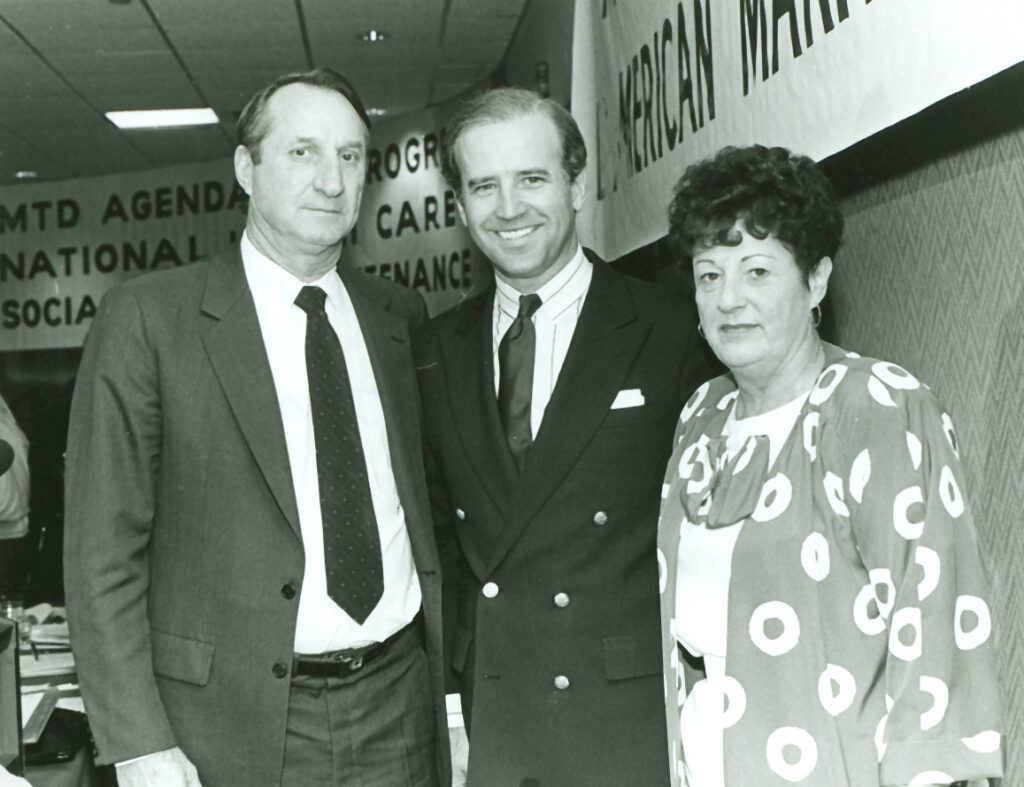
MTD President 1980-88
Jean Ingrao (right)
MTD Exec Sec-Treas 1979-93
(with then US Sen Joe Biden)
The maritime industry had high hopes this would be the start of a new boom for the U.S.-flag. But, it was not to be as America again looked away from its merchant fleet with the end of Americans fighting in Vietnam in 1973. Three years later, President Ford vetoed petroleum cargo preference legislation pushed by the MTD and the industry.
Meanwhile, following the merger of the AFL and CIO, new affiliates signed on with the MTD increasing the total to 43, representing more than 10 million union members. A total of 29 Port Maritime Councils could be found from the Atlantic to the Pacific, from the Great Lakes to the Gulf of Mexico, and points in between – including as many as five in Canada.
The MTD report to the 1967 AFL-CIO Convention saluted the PMCs: “In many respects, the structure of the Maritime Trades Department could be likened to an iceberg. Our national headquarters is one-eighth of the iceberg that can be seen above the surface; the Port Council network is the remaining seven-eighths – it is hidden beneath the surface, but it is the main part of our effort.”
McGavin died in 1975 with Moody remaining as administrator until Jean Ingrao became the executive secretary-treasurer in 1979, the first woman elected as an officer of an AFL-CIO constitutional department.
When Hall passed away in 1980, the national political consensus was more conservative. Frank Drozak took over the MTD presidency just as Ronald Reagan came to the White House. The MTD and its Port Councils fought hard, but could not save major parts of the 1970 legislation. Looking to save money, defense ”experts” said the nation could use American-owned, foreign-crewed, foreign-flag vessels to move its needed cargo.
Drozak died in 1988, bringing Michael Sacco to the bridge of the MTD as the United States was about to rediscover how valuable American mariners and ships were to the nation’s armed forces and the economy.
